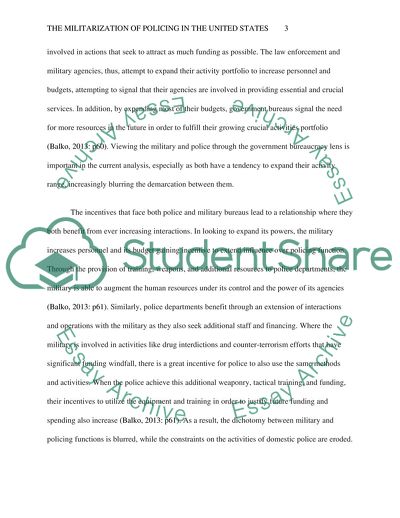Cite this document
(The Militarization of Policing in the United States Literature review Example | Topics and Well Written Essays - 1250 words, n.d.)
The Militarization of Policing in the United States Literature review Example | Topics and Well Written Essays - 1250 words. https://studentshare.org/social-science/1844035-the-militarization-of-policing-in-the-us
The Militarization of Policing in the United States Literature review Example | Topics and Well Written Essays - 1250 words. https://studentshare.org/social-science/1844035-the-militarization-of-policing-in-the-us
(The Militarization of Policing in the United States Literature Review Example | Topics and Well Written Essays - 1250 Words)
The Militarization of Policing in the United States Literature Review Example | Topics and Well Written Essays - 1250 Words. https://studentshare.org/social-science/1844035-the-militarization-of-policing-in-the-us.
The Militarization of Policing in the United States Literature Review Example | Topics and Well Written Essays - 1250 Words. https://studentshare.org/social-science/1844035-the-militarization-of-policing-in-the-us.
“The Militarization of Policing in the United States Literature Review Example | Topics and Well Written Essays - 1250 Words”. https://studentshare.org/social-science/1844035-the-militarization-of-policing-in-the-us.


